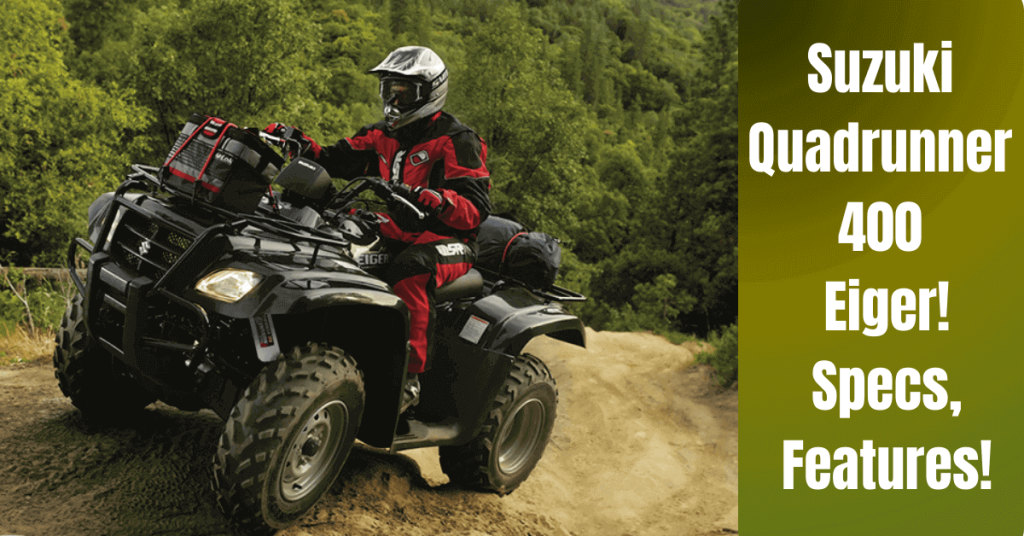
With the Suzuki Quadrunner 400 Eiger, you can take on any off-road situation. Amidst the flashier, race-inspired Suzuki Eiger 400 4×4, the Eiger 400 often goes unnoticed.
Quadrunner 400 Eiger features a four-stroke, one-cylinder, air-cooled engine that is powerful and fast. The vehicle has an automatic transmission, independent front and rear suspensions, and hydraulic disc brakes. Power, agility, and control are all found in the Quadrunner 400 Eiger.
It’s a reliable and high-performance ATV. The Suzuki Quadrunner 400 Eiger is the best choice to explore rough terrain, tackle challenging trails, or cruise around the countryside.
It’s better not to underestimate the performance and reliability of this simple four-wheeler. Instead, let’s examine this dependable and underrated machine to determine if it’s right for your next adventure!
Suzuki Quadrunner 400 Eiger Features
The Suzuki Eiger 400 is a reliable and durable ATV that tackles the toughest off-road terrain. Here are some of its standout features:
Engine
A four-stroke, air-cooled engine with impressive performance and speed power the Eiger 400. With a displacement of 376cc, this engine can produce up to 29 horsepower. It makes it an excellent choice for challenging trails and rough terrain.
| Engine Brand Name | Keihin |
| Engine Type | 4-Stroke OHC |
| Cylinder Arrangement | Single cylinder |
| Carburetion System | Keihin CVK32 |
| Engine Cooling | Air cooling with SACS |
| Engine Fuel | Unleaded gasoline of at least PON 87 or RON 91, containing MTBE (Methyl Tertiary Butyl Ether), < 10% ethanol, or < 5% methanol w/ appropriate cosolvents and corrosion inhibitor |
| Fuel Capacity | 16 L/4.2 US gal (reserve – 2.9 L/0.8 US gal) |
| Fuel Economy | 13.84 L/100 km (17 mpg) |
| Bore x Stroke Ratio | 82 x 71.2 mm (3.23 x 2.80 in) |
| Compression Ratio | 9.0:1 |
| Displacement | 376 cm³ / 22.9 in³ |
| Valve Diameter Intake | 30.6 mm (1.20 in) |
| Valve Diameter Exhaust | 27.0 mm (1.06 in) |
| Valve Clearance Cold Intake | 0.05 – 0.10 mm (0.002 – 0.004 in) |
| Valve Clearance Cold Exhaust | 0.22 – 0.27 mm (0.009 – 0.011 in) |
| Horsepower | 29 HP |
| Top Speed | 45-50 mph (72-80.5 km/h) – marketed 80-85 mph (128-136.8 km/h) – owners’ claim |
| Air Filtration | Polyurethane foam element |
| Lubrication | Wet sump |
Drivetrain
Depending on the model, the right handlebar lever can switch between 2WD and 4WD on Suzuki Eiger 400s. Engine torque is transmitted to the front wheels through a thumb switch and either a two-speed QuadmaticTM V-belt gearbox (with reverse) or a five-speed forward constant mesh gearbox with a locking front differential.
Shifting is handled with an easy-to-use up-and-down shifter and an automated centrifugal wet clutch. Models with various transmissions have varying shift sequences.
| Clutch | Wet shoe, automatic, centrifugal type |
| Transmission Type | Automatic variable ratio (V-belt) |
| Transfer | 2-speed forward with a reverse |
| Gearshift Pattern | L-H-N-R (Hand operated) |
| Drive System | Shaft drive |
| Primary Ratio | 2.938 – 0.813 (Variable change) |
| Final Drive Ratio | 3.600 (36/10) |
| Transfer Gear Ratio | 2.500 (40/16) – Low 1.375 (33/24) – High |
| Transmission Gear Ratio | N/A |
Transmission
The Eiger 400 features an automatic transmission. Which makes switching between gears while riding easy. It allows riders to focus on navigating the terrain without worrying about manually shifting gears.
| Length | 2,160 mm (85.0 in) P-17, 24; 2,060 mm (81.1 in) P-28,33 |
| Height | 1,200 mm (47.2 in) P-17, 24; 1,145 mm (45.1 in) P-28,33 |
| Width | 1,220 mm (48.0 in) |
| Seat Height | 840 mm (33.1 in) |
| Ground Clearance | 250 mm (9.8 in) |
| Wheelbase | 1,270 mm (50.0 in) |
| Dry Weight | 252 Kg (555 lbs) LT-A400 272 Kg (559 lbs) LT-A400F (P-17) 275 Kg (606 lbs) LT-A400F (P-24) 268 Kg (590 lbs) LT-A400F (P-28,33) |
| Vehicle Load Capacity Limit | 172 Kg (380 lbs) |
Suspension
The Eiger 400 features independent suspension on both the front and rear. That provides excellent shock absorption and helps to keep the quad stable on uneven terrain. It makes for a smoother and more comfortable ride, even on the bumpiest of trails.
| Caster, Trail | 3°, 14 mm (0.55 in) |
| Toe-in | 10 mm (0.39 in) |
| Steering Angle | 47° (right & left) |
| Turning Radius | 3.1 m (10.2 ft) |
| Front Suspension Type, Travel | Independent, double wishbone, coil spring, oil damped, 170 mm (6.7 in) |
| Rear Suspension Type, Travel | Swingarm type, coil spring, oil damped, 170 mm (6.7 in) |
Wheels and Tires
The Eiger 400 has durable, high-traction tires that grip even the roughest terrain. The quad also features lightweight aluminum wheels that provide exceptional maneuverability and handling.
Tires, including original equipment and replacements, have a safe operating pressure range that must be respected. Maximum pressure should never exceed 45 kPa (0.46 kg/cm2, 6.5 psi) while filling should never exceed 70 kPa (0.71 kg/cm2, ten psi), and deflating should never exceed 25 kPa (0.25 kg/cm2, 3.6 psi).
Suzuki that a manual air pump be used instead of a high-pressure air compressor to prevent tire damage from occurring due to over-inflation.
| Front Tire, off-road/road air pressure | Dunlop KT121HD AT25 x 8-12, tubeless (P-24) Maxxis M913S AT25 x 8-12, tubeless (Others) Tire Pressure: 32.5 kPa (0.325 kgf/cm2, 4.7 psi) |
| Rear Tire, off-road/road air pressure | Dunlop KT405HD AT25 x 10-12, tubeless (P-24) Maxxis M909S AT25 x 10-12, tubeless (Others) Tire Pressure: 30 kPa (0.30 kgf/cm2, 4.4 psi) |
| Tire Tread Depth, F/R | Limit: 4.0 mm (0.16 in) |
Brakes
The Eiger 400 has hydraulic disc brakes on both the front and rear wheels. That provides exceptional stopping power. It allows riders to maintain control in challenging situations.
| Front Brake Type | Disc brake, twin |
| Rear Brake Type | Drum Brake |
Storage
The Eiger 400 has a front storage compartment. That provides ample space for storing tools, gear, and other essentials while riding.
Exterior
Steel supports the plastic body of this all-terrain vehicle, which comes in various color schemes, including Advantage Camouflage. Switches for the parking brake and the brake lights on a Suzuki Eiger 400 are located on the left side of the bike. On the opposite side of the handlebar, you’ll find the other switches and the output terminal.
The starter button is located on the dashboard, and a rescue winch may be securely fastened to the tab on the front bumper. The battery, fuse box (and other electrical components) are beneath the front seat.
| Electronic Speedometer | Standard |
| Indicator Lamps | Standard |
| Trip Odometer & Computer | Standard |
| Emergency Off Switch | Standard |
| Engine Stop Switch | Standard |
| Oil Temperature Switch | Standard |
Lighting
The SUV has all the average illumination. However, only Swedish-market Eiger 400s come with reverse and high-beam indicator lights. Nonetheless, any model can be made road-worthy; for specifics, check the laws in your jurisdiction.
| Headlight | HS1 – 12V 35W x 2 |
| Brake Light/Taillight | 12 V 21/5 W |
| Speedometer Light | 12 V 1.7 W |
| Indicator Lights | 12 V 3.4 W (oil temperature, neutral) |
| High Beam Indicator Light | 12 V 3.4 W (P-17) |
| Reversing Light | 12 V 21 W (P-17) |
Comfort
The Eiger 400 features a comfortable, ergonomic seat that reduces fatigue and supports long rides. The handlebars are also adjustable. It allows riders to customize the riding position to their preferences.
The Suzuki Eiger 400 is a capable and reliable ATV perfect for tackling tough off-road terrain. This quad has a powerful engine, smooth transmission, and advanced suspension and braking systems to ensure exceptional riding.
What Is the Price of a Suzuki Eiger 400?
Depending on the model year, trim level, and drivetrain configuration, an Eiger 400 can vary from $4,349 to $5,899. The Suzuki Eiger LT-F400K3 from 2003 is the least expensive option, while the Suzuki Eiger LT-A400FHK7 (Advantage Camouflage) from 2007 is the most costly.
The 4×4 versions are slightly less expensive than the 2×4 ones. Camouflaged versions, a steal for riders who favored hunter-themed decals, were significantly less costly than the standard versions.
There are few places to look for auctions. Resale units typically appear as Suzuki Eiger 400 Quadrunners and cost between $690 and $3,550. These four-wheelers are well-kept and used more often on the ranch than in the wilderness. For use in the yard, they may be equipped with Suzuki Eiger accessories, such as a plow or a 25-gallon lawn and gardening sprayer with an extra wand.
Some may even include extras like a fresh battery, a lockable top box, scabbards for the firearms, or a custom-made padded firing rail. However, others may need minor repairs or a fresh coat of paint. Used Eigers without titles are commonly offered for sale online.
List of All Suzuki Eiger 400 Models And Their Prices
| Year, Trim & Model | List Price | Retail Price |
| 2002 Suzuki Eiger 400 2×4 – LT-A400K2 | $4,699 | $690 – $905 |
| 2002 Suzuki Eiger 400 4×4 – LT-A400FK2 | $5,599 | $845 – $1,115 |
| 2003 Suzuki Eiger 400 2×4 – LT-A400K3 | $4,499 | $760 – $1,000 |
| 2003 Suzuki Eiger 400 4×4 – LT-A400FK3 | $5,299 | $920 – $1,210 |
| 2003 Suzuki Eiger 400 2×4 – LT-F400K3 | $4,349 | $735 – $965 |
| 2003 Suzuki Eiger 400 4×4 – LT-F400FK3 | $5,149 | $880 – $1,160 |
| 2004 Suzuki Eiger 400 2×4 – LT-A400K4 | $4,499 | $870 – $1,145 |
| 2004 Suzuki Eiger 400 4×4 – LT-A400FK4 | $5,299 | $1,045 – $1,375 |
| 2004 Suzuki Eiger 400 – LT-A400FCK4, Advantage | $5,499 | $1,075 – $1,415 |
| 2004 Suzuki Eiger 400 2×4 – LT-F400K4 | $4,349 | $830 – $1,095 |
| 2004 Suzuki Eiger 400 4×4 – LT-F400FK4 | $5,149 | $1,020 – $1,345 |
| 2005 Suzuki Eiger 400 4×4 – LT-A400FK5 | $5,349 | $1,275 – $1,675 |
| 2005 Suzuki Eiger 400 – LT-A400FCK5, Advantage | $5,549 | $1,320 – $1,735 |
| 2005 Suzuki Eiger 400 4×4 – LT-F400FK5 | $5,199 | $1,225 – $1,615 |
| 2005 Suzuki Eiger 400 – LT-F400FCK5, Advantage | $5,399 | $1,280 – $1,685 |
| 2006 Suzuki Eiger 400 2×4 – LT-A400K6 | $4,499 | $1,345 – $1,770 |
| 2006 Suzuki Eiger 400 4×4 – LT-A400FK6 | $5,349 | $1,510 – $1,985 |
| 2006 Suzuki Eiger 400 – LT-A400FCK6, Advantage | $5,549 | $1,560 – $2,050 |
| 2006 Suzuki Eiger 400 2×4 – LT-F400K6 | $5,199 | $1,560 – $2,050 |
| 2006 Suzuki Eiger 400 4×4 – LT-F400FK6 | $5,399 | $1,560 – $2,055 |
| 2007 Suzuki Eiger 400 4×4 – LT-A400FK7 | $5,399 | $1,510 – $1,990 |
| 2007 Suzuki Eiger 400 – LT-A400FCK7, Advantage | $5,599 | $1,570 – $2,065 |
| 2007 Suzuki Eiger 400 – LT-A400FHK7, Advantage Camouflage | $5,899 | $1,680 – $2,210 |
| 2007 Suzuki Eiger 400 4×4 – LT-F400FK7 | $5,249 | $1,575 – $2,070 |
| 2007 Suzuki Eiger 400 – LT-F400FCK7, Advantage | $5,449 | $1,645 – $2,165 |
Suzuki Quadrunner 400 Eiger Oil Filter Explained!
The oil filter is vital to the Suzuki Eiger 400 ATV, protecting the engine from contaminants, debris, and other harmful particles. Those can cause damage or reduce its performance.
It’s located on the right side of the engine, just behind the front wheel. The Eiger 400’s oil filter is easily accessible and can be removed and replaced with minimal effort. The quad uses a replaceable, cartridge-style oil filter made of high-quality materials. It ensures reliable filtration and protection for the engine.
The manufacturer recommends changing the oil and filters every 100 hours of operation or at least once a year if the ATV is used infrequently. By replacing the oil filter, Suzuki Eiger 400 owners can ensure their engine is well-lubricated and protected. It extends the ATV’s lifespan.
A well-functioning oil filter requires regular maintenance to ensure optimal engine performance. & protect the ATV from potential damage.
Suzuki Quadrunner 400 Eiger’s Battery: Size, Maintenance & All!
The Suzuki Eiger 400 relies on a reliable battery to start its engine and run its electrical systems. The Yuasa YTX14-BS sealed lead-acid battery is designed to fit securely in the Eiger’s battery compartment. With a 12-volt output and a capacity 12Ah, this maintenance-free battery requires no water or acid throughout its lifespan. However, keeping the battery clean and debris-free is essential to avoid damage or reduced performance.
If the battery needs replacement due to normal wear and tear or other issues, it is vital to use the correct type and size of battery, such as the Yuasa YTX14-BS. This ensures proper fit and performance. To keep the battery charged and ready to go, use a compatible battery charger or follow the manufacturer’s guidelines for charging times and procedures. Overcharging or undercharging the battery can cause damage or reduced performance. By taking care of the Eiger 400 battery, you can ensure reliable starting power in various conditions.
Drawbacks With Possible Solutions
While the Eiger 400 has many excellent features, there are a few drawbacks to be aware of. Here are some of the main issues and possible solutions:
Problems With Power & Starter Motor
The Eiger 400 is not the most powerful ATV on the market, and some riders may find it lacks the necessary power. Possible problem sources include blown fuses, shorted relays, low-voltage batteries, defective parking brake switches, or starter clutches. Worn gaskets or flawed gear selectors can also be the cause. Starting difficulty is usually due to a carburetor or air-fuel mixture problem.
Solution
Possible solutions include upgrading to a more powerful ATV or adding aftermarket upgrades to the Eiger 400 to increase its performance. For Starter Motor issues in the Suzuki Eiger 400, replacing the CDI box may not always be the most practical solution. A thorough inspection of other aspects of the quad, including gear selection and electrical components, is necessary. It’s also essential to note that starting the engine from any other transfer position apart from neutral is unlikely to work.
Problem With The Suspension & Brake
While the Eiger 400 has a solid suspension & braking system, some riders may find it not as smooth or responsive as they would like. & lack the necessary stopping power for more demanding tasks or terrain.
Solution
One possible solution is to upgrade the suspension & braking components. Or, add aftermarket shocks to improve the Eiger’s performance on rough terrain.
Overcharging regulator Problem
Overcharging regulators is a common topic of discussion in ATV forums and is often cited as a primary concern among consumers. However, a defective battery is often the cause of the problem. Electronic accessories added to the quad can also be a contributing factor.
Abnormal driving conditions can cause fluctuations in the regulated voltage between the battery terminals, further exacerbating the issue.
Solution
Be mindful of how much electricity aftermarket accessories are to use. Inspecting the wire harness and testing the contact between couplers is necessary. If you’ve experienced a leaking battery, it’s possible that the battery is to blame. If you’ve experienced acid leaks again & again, the regulator/rectifier is at fault. It’s important to address this issue to prevent further damage to the quad.
Starting Difficulty
While a faulty electrical component likely caused the previous problem, difficulties in getting your four-wheeler started usually require adjusting the carburetor and the air-fuel ratio. Fixing this issue can range from cleaning filters, gasoline lines, and passages to replacing the top end.
It’s important to factor in how often you take your quad out into the great outdoors and how long it’s been sitting in storage when planning when to perform maintenance on your weekend warrior.
Some more concerns with the Suzuki Eiger 400 include the following. Forums devoted to Suzuki ATVs and other off-road vehicles are excellent places to find detailed descriptions of issues and solutions.
Conclusion
Adventurers recommend Suzuki Quadrunner 400 Eiger models with manual transmissions over automatic transmissions. Both versions boast excellent fuel economy, torque-sensing front differentials, foot-operated brake pedals, and selectable drive line modes. A manual 4WD trim is preferred for its superior maneuverability, fewer engine problems, and potential for custom builds.
Despite the Suzuki Eiger 400’s drawbacks from the off-roading community, it remains a reliable and durable machine. Its impressive performance and versatility make it a rare gem worthy of attention. Whether you’re a seasoned adventurer or a newcomer to off-roading, the Suzuki Eiger 400 is an excellent choice for years of trouble-free riding.
FAQs
Is the Suzuki Eiger 400 a 4×4?
A four-wheeled Suzuki motorcycle designed for rough terrain, the Eiger 400 is an all-terrain vehicle. It may be driven with two or four wheels, has a fuel capacity of four US gallons (15 L), and is equipped with a 376 cc, single overhead cam, four-stroke, single-cylinder, air/oil-cooled engine.
How many gears does the Suzuki 400 have?
For a more engaging driving experience, the 2023 Suzuki KingQuad 400FSi Camouflage offers a five-speed manual gearbox with a semi-automatic clutch. It not only generates a significant amount of torque, but it also possesses an extensive power band. It can deliver outstanding performance, whether on the job or out in the wilderness.
How big is Suzuki’s largest utility vehicle?
Overview. Strength, direction, and safety. With its big-bore practical focus, the Suzuki KingQuad 750AXi reigns supreme among KingQuads. The 722cc single-cylinder liquid-cooled engine included in this model is Suzuki’s most powerful ATV motor.
What does an ATV typically weigh?
The typical weight of a 450cc Sport ATV is 400 lbs, while a 450cc Utility ATV is closer to 550 lbs. How much an ATV weighs depends on its size, category, and manufacturer.
What’s the fastest Suzuki ATV out there?
First, in 1988, Suzuki unleashed the LT500 ATV, better known by its nickname, Quadzilla. As its enormous moniker suggests, the Quadzilla was a powerful machine that could reach up to 80 miles per hour.
Does anyone know what sort of oil works best in a Suzuki Eiger 400?
Motul 10W-40 3 liters K&N Filter Suzuki Eiger 400 Mineral Engine Oil Changing Kit.






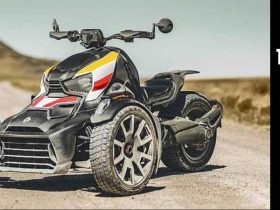
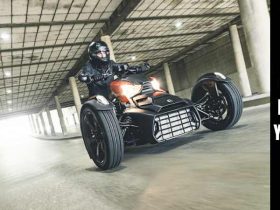
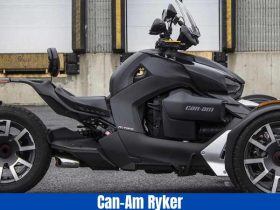
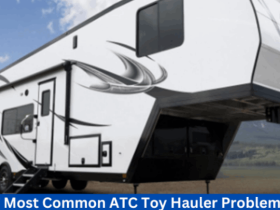
Leave a Reply